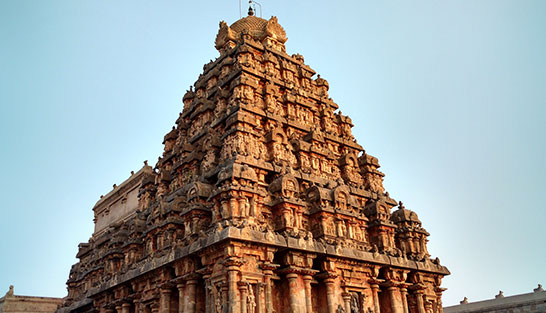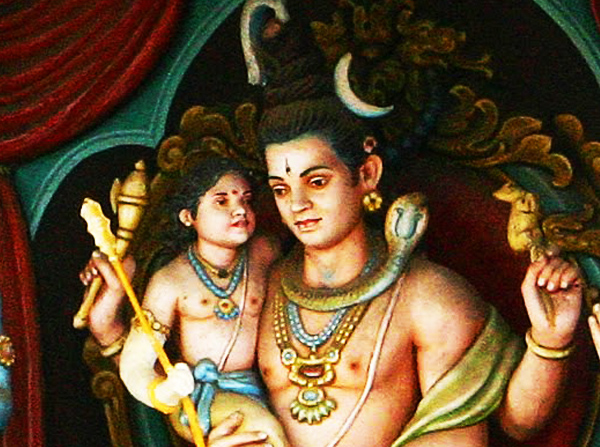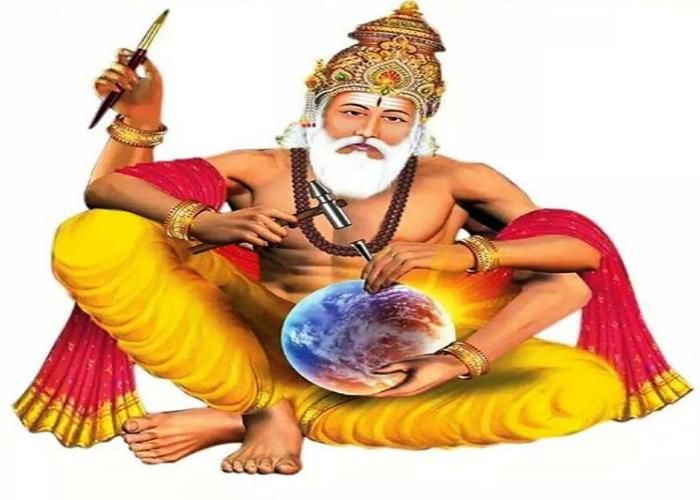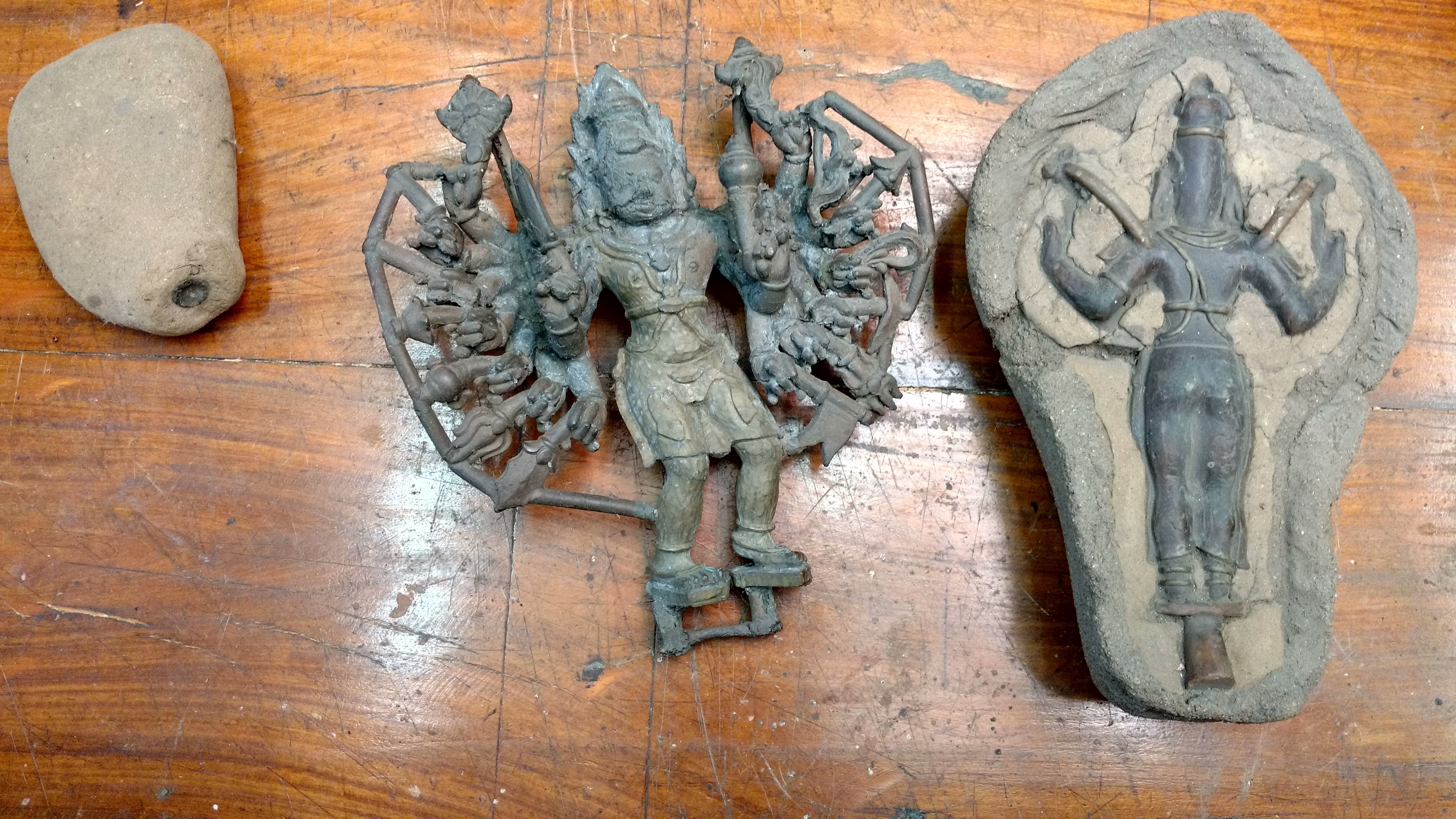Fancy some Time Travel? Want to go back in Time without a Time Machine? Here’s your Chance!
Central Tamil Nadu was at one time, the heartland of the Cholas. This is where the river Kaveri, (also known as Ponni in Tamil), is worshipped as the Mother Goddess for feeding the land and people with her abundance.
Of the four UNESCO World Heritage sites in Tamil Nadu, three are located in this region – all a legacy of the Cholas that ruled the area from the 9th to 13th century CE.
Should you find yourself in this region of Tamil Nadu, you must take some time out familiarise yourself and your children with some great Chola works.
The Cholas were famous for their architecture as well as their sculpture-work. The famed temples of Periya Koyil in Tanjore, Airawateshwara in Darasurm as also the everlasting sculpture of the Nataraja are testimonies to their legacy.

But if you thought looking at stone and metal made for boring excursions for children, think again!
Making either Thanjavur, Kumbakonam or Trichy as your base, can give your children a veritable taste of Chola Heritage! What’s more… It isn’t still and lifeless artefacts but alive and thriving skills!
About 8 km west from Kumbakonam, on the northern banks of the River Kaveri, is the town of Swamimalai, one of the most revered abodes of Lord Murugan, son of Lord Shiva.
Legend from the Kanda Purana has it that son became guru to the father at Swamimalai, explaining to him the meaning of the Pranava Mantra. Perhaps a myth that began to bring about a synthesis of two popular cults – one amongst many such syncretic tales ones finds in India.

The popular myth and the legend of son becoming teacher to father, makes for a very interesting tale. Click here to read the story.
While the temple is the point of attraction for several, including perhaps grand-parents in your family, there is also plenty for the non-religious and non-spiritual traveller here.
Swamimalai town is dotted with workshops of bronze casters, where one can watch craftsmen working away on creating bronze statues.
These workmen employ the same methods and style of craft as those used by the craftsmen of the Cholas centuries ago. In fact, they claim to be direct descendants of the Chola craftsmen!
The sthapatis (casters) are said to belong to the Vishwakarma community, whose name derives from the mythical Vishwakarma, the divine architect of the gods.

They claim to be direct descendants of the sculptors who served King Raja Raja Chola I in the construction of the Brihadeeshwara temple at Thanjavur.
As per their genealogy, after the temple of Thanjavur was finished, a group of sculptors migrated and settled down in Swamimalai.
These sculptors continue to use the same lost wax-casting process that is said to have been used during the Chola times.
Upon special request, workshop owners appear happy to welcome visitors and show and explain the process of casting by the lost-wax technique.
The process begins by measuring and marking the desired figure with the help of the frond of a palm tree.
Thereafter a wax model of the bronze figure is made and carefully crafted to perfection.

This is covered with three layers of clay of a specific quality found in the Kaveri Basin.
Next, the mould is heated, causing the wax to melt, which creates a hollow within.
Molten metal from the foundry comprising an alloy of copper, silver, gold, tin and lead is then poured into the hollow to take the place of the melted wax.
One can witness this ancient method of Lost-Wax Bronze Casting at the workshops even today. It is just like Travelling Back in Time!

It is said that the bronze icons of the Cholas form one of India’s greatest contributions to the world of Art.
Most famous of course of Chola bronzes is the statue of Shiva as Nataraja, the Lord of Dance. (Don’t just gaze at the Nataraja…find out its iconographic story…I’ll be writing that up too sometime…sign up or follow the site to stay posted.)
So, on your visit to this part of Tamil Nadu, make sure you take some time out to admire and show your children these fascinating crafts!
Isiah Bailor
March 3, 2019 - 7:05 am ·I think other website proprietors should take this website as an model, very clean and wonderful user friendly style and design.
Mallika Ravikumar
March 18, 2019 - 2:40 pm ·That’s so nice of you. Glad you liked the site and found it useful.